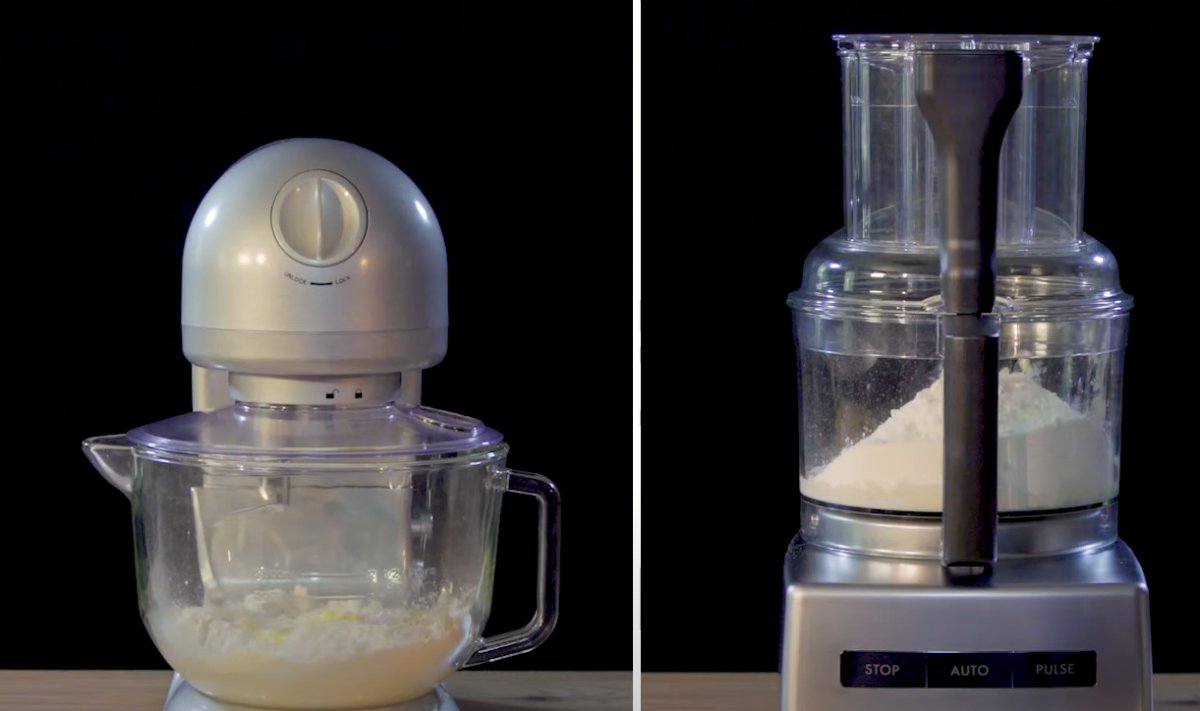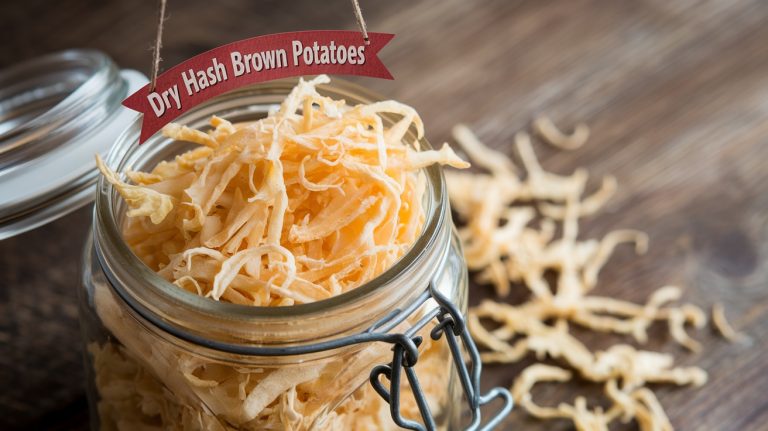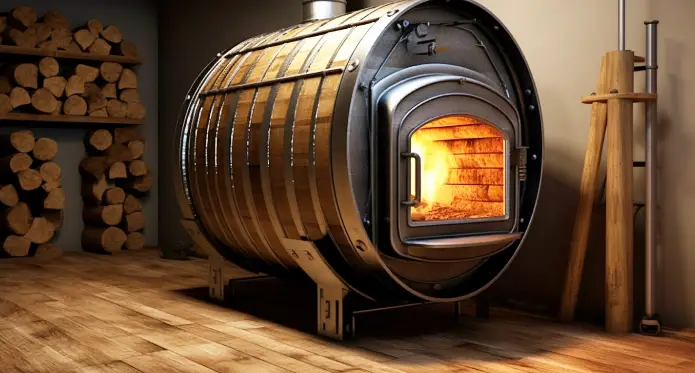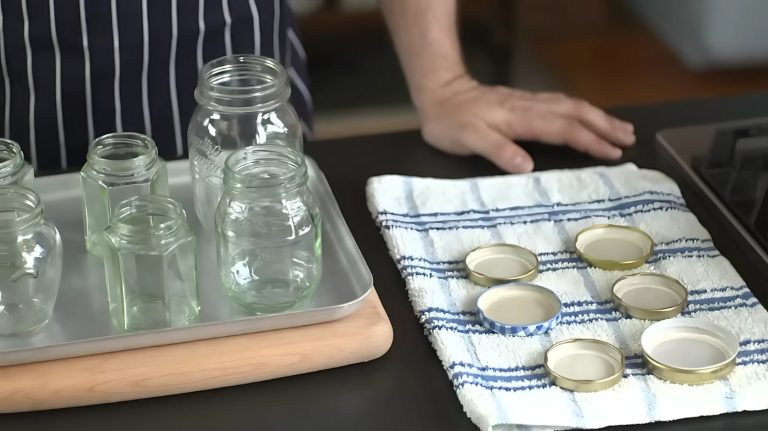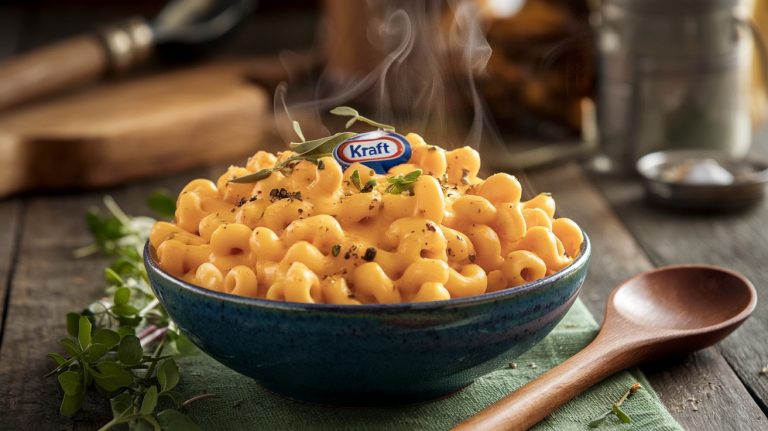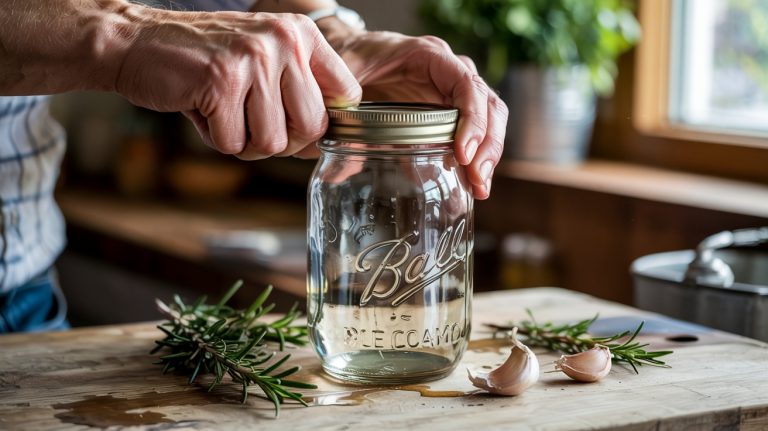Food Processor Vs Stand Mixer: Battle of the Kitchen
When you’re deciding between a food processor and a stand mixer, think about your cooking style. Food processors shine in versatility; they chop, slice, and puree quickly, perfect for salads and sauces. Stand mixers excel at mixing, whipping, and kneading dough, ensuring even texture for baked goods.
If you love batch baking, a stand mixer’s capacity can handle dozens of cookies at once. On the other hand, for quick meal prep, a food processor can save you time. Each serves unique functions, so your choice hinges on whether you’re prepping meals or crafting baked treats. Discover more insights on this comparison.
Key Takeaways
- Food processors excel in chopping, shredding, and pureeing, while stand mixers specialize in mixing, whipping, and kneading dough.
- Food processors are versatile and efficient for meal prep, but stand mixers offer better control for baking tasks.
- Stand mixers typically have larger bowl capacities, ideal for extensive baking projects, while food processors handle small batches efficiently.
- Food processors require more cleaning due to multiple parts, whereas stand mixers have fewer components, making maintenance easier.
Key Differences
When choosing between a food processor and a stand mixer, you’ll quickly notice key differences in functionality and versatility.
A food processor shines with its ability to chop and shred a variety of ingredients, while a stand mixer focuses on mixing and kneading dough.
Understanding these distinctions can help you determine which appliance best suits your culinary needs.
Functionality Comparison
Understanding the key differences in functionality between a food processor and a stand mixer can help you choose the right appliance for your kitchen needs.
Food processors shine when it comes to prep work; they excel at chopping, slicing, shredding, and pureeing. If you’re preparing ingredients for salads or sauces, a food processor’s versatility and multiple attachments make these tasks a breeze.
In contrast, stand mixers focus on mixing functions, primarily whipping and kneading dough. Their specialized tools, like dough hooks and whisks, cater to soft ingredients, making them a must-have for baking enthusiasts. Stand mixers typically operate at higher speeds, perfect for aerating batters, while food processors offer variable speeds tailored for different food prep tasks.
While food processors can tackle tougher ingredients like nuts and raw vegetables, stand mixers are limited to softer substances. This versatility often makes food processors more expensive than their stand mixer counterparts, which tend to be more budget-friendly and specialized.
To summarize, your choice depends largely on whether you need a versatile prep tool or a dedicated mixer for baking tasks.
Capacity and Versatility
Capacity and versatility are essential factors that set food processors and stand mixers apart, influencing how they fit into your kitchen routine and culinary projects.
Food processors typically offer larger capacity bowls, making them perfect for meal prep and bulk cooking. If you’re chopping veggies for a big family gathering or preparing a large batch of hummus, a food processor can handle it with ease.
On the other hand, stand mixers often feature mixing bowls that can hold up to 7 liters, ideal for ambitious baking endeavors like multiple loaves of bread or big cookie batches. While stand mixers excel at mixing and kneading dough due to their specialized attachments, they lack the extensive versatility of food processors.
Food processors shine with their ability to chop, slice, shred, and even knead dough, handling tough ingredients like nuts and vegetables effortlessly. In contrast, stand mixers primarily focus on softer substances like batter and dough.
Ultimately, your choice will depend on whether you prioritize bulk food preparation or baking projects, as each offers unique advantages in capacity and versatility.
Chopping and Mashing
In the kitchen, choosing between a food processor and a stand mixer for chopping and mashing can greatly impact your meal prep efficiency and the quality of your dishes.
Food processors excel at quick chopping and slicing, saving you precious time. They handle tough ingredients, making them ideal for versatile chopping. When it comes to chopping, food processors shine with their multipurpose blades and various discs, allowing you to tackle everything from nuts to vegetables effortlessly. They minimize mess, making cleanup a breeze.
On the other hand, stand mixers are best for creamy mashes, like mashed potatoes, thanks to their flat beaters. While stand mixers require specific attachments for chopping, limiting their versatility, they really excel in mashing. Their flat beaters create the perfect consistency for creamy dishes.
If you’re focusing on dough, a stand mixer is your go-to, while the food processor takes the lead for a variety of chopping tasks. Ultimately, your choice depends on what you prioritize in your kitchen—efficiency or specialized performance.
Juicing and Sauce Making
Juicing and sauce making can dramatically elevate your culinary creations, but choosing the right appliance for the task is essential. Food processors are excellent for chopping and pureeing ingredients, making them a great choice for smooth sauces. However, when it comes to juicing, they fall short since their design isn’t optimized for separating liquid from pulp.
Stand mixers, on the other hand, shine in this area. With the right attachments, they can efficiently handle juicing, allowing you to create fresh juices and sauces with ease. These mixers offer greater versatility, especially for batch processing, making them ideal if you love making large quantities.
Here’s a quick comparison:
| Appliance | Juicing Capability | Sauce Making Capability |
|---|---|---|
| Food Processor | Limited | Excellent |
| Stand Mixer | Excellent (with attachments) | Good |
Usage Scenarios
When it comes to meal prep and baking, choosing between a food processor and a stand mixer can make all the difference in your kitchen efficiency and the quality of your dishes. Each tool shines in specific scenarios, helping you tackle various cooking tasks with ease.
Food processors excel at chopping and slicing, perfect for salads and dips.
Stand mixers provide consistent mixing for batters and kneading dough, ideal for baked goods.
Both appliances can handle large quantities, but for different tasks.
If you’re whipping up a quick weeknight dinner, a food processor is your best bet. It’ll save you time by efficiently chopping vegetables or making sauces.
However, when you’re ready to bake, particularly for bread or cookies, a stand mixer will guarantee your dough is mixed evenly and aerated perfectly, yielding delicious results.
For tougher ingredients, like nuts or dense dough, food processors outperform stand mixers, thanks to their powerful motors and specialized blades.
Understanding these usage scenarios can help you make the right choice, maximizing your kitchen efficiency and elevating your food creations.
Dough Preparation
When it comes to preparing dough, you’ll notice distinct differences between food processors and stand mixers.
Food processors work quickly, kneading dough in under two minutes, while stand mixers take their time to guarantee perfect consistency, especially for softer mixtures.
Depending on your batch size and dough type, each appliance offers its own strengths that can elevate your baking experience.
Kneading Techniques Comparison
Kneading dough can be a game changer in your baking process, and choosing between a food processor and a stand mixer can greatly affect the texture and quality of your final product. Here’s what you should consider:
- Food processors knead dough in under 2 minutes, perfect for quick recipes.
- Stand mixers require about 10 minutes with a dough hook, offering better control.
Using a food processor, you can knead dough quickly, making it ideal for pizza or bagel preparations. However, rapid mixing can lead to overworked, rubbery dough if you’re not careful.
On the other hand, a stand mixer provides a stable environment for kneading, allowing you to gradually incorporate ingredients without the risk of overworking. If you’re dealing with softer doughs, a stand mixer’s dough hook will give you the control needed for a perfect texture.
Keep in mind that while food processors work best in smaller batches, stand mixers can handle larger quantities, accommodating up to 8-9 dozen cookies in one go.
Choose wisely to elevate your baking game!
Batch Size Efficiency
Food processors often shine in small batch efficiency, mixing dough quickly for quick meals like pizza. However, stand mixers truly excel when tackling larger quantities for extensive baking projects.
If you’re whipping up a few pizza crusts or a small batch of pasta, a food processor gets the job done in under 2 minutes. However, when your baking ambitions grow, a stand mixer’s larger bowl capacity—often up to 7 liters—becomes invaluable.
Imagine preparing multiple loaves of bread or a whopping 8-9 dozen cookies in one go. This efficiency is hard to beat. While food processors can handle stiff doughs like bagels effectively, they may struggle with wet doughs, which can gum up the blades and complicate cleanup.
In contrast, a stand mixer provides more stability, allowing for gradual ingredient incorporation and control during prolonged kneading.
In essence, if you’re focused on batch size, the stand mixer is your go-to for larger projects, while food processors serve you well for quick, smaller tasks. Choose wisely based on your baking needs, and you’ll find the right tool for your dough adventures.
Mixing Efficiency
In the domain of mixing efficiency, food processors shine by kneading dough in under 2 minutes, while stand mixers take their time, often requiring up to 10 minutes for a similar consistency. If you’re in a hurry to whip up your favorite recipes, the food processor’s speed is a game-changer.
Quick Dough Kneading: Food processors excel with stiff or gluten-heavy doughs, making them perfect for bagels.
Stable Mixing Environment: Stand mixers allow for gradual ingredient incorporation, ideal for softer doughs.
Batch Capacity: Stand mixers can handle large batches, accommodating up to 8-9 dozen cookies at once.
When it comes to mixing efficiency, consider what you need. If you’re tackling quick tasks or stiff doughs, the food processor is your best friend.
However, if you’re working with softer doughs and need to avoid overworking, a stand mixer offers a more controlled environment.
Both appliances have their strengths, so think about your typical baking needs and choose accordingly.
Whether you go for a food processor or a stand mixer, each can elevate your baking game in unique ways.
Equipment Maintenance
Maintaining your kitchen appliances is just as important as using them effectively, especially when you’re relying on their unique capabilities for mixing and preparing your favorite dishes.
When it comes to cleaning, food processors need a bit more attention. You’ll find yourself washing multiple parts, including blades and bowls, though many components are dishwasher safe, which simplifies maintenance. In contrast, stand mixers typically have fewer parts to clean, making your maintenance routine quicker and easier.
To guarantee peak performance, regularly inspect the blades and attachments of both appliances. This proactive approach helps prevent wear and keeps everything running smoothly.
Don’t forget to store your food processors and stand mixers properly; avoid stacking heavy items on top, as this can compromise their longevity and functionality.
Additionally, periodic deep cleaning is a must. This practice prevents food residues from building up and maintains hygiene in your kitchen.
User Preferences
When it comes to kitchen appliance choices, personal cooking style often dictates whether you reach for a stand mixer or a food processor, as each serves distinct culinary needs. Your preferences can shape your cooking experience considerably.
Bakers often prefer stand mixers for their precision and control.
Home cooks love food processors for their versatility in meal prep.
Some enjoy the tactile experience of hand kneading dough.
If you bake regularly, a stand mixer might be your best bet, thanks to its durability and specialized attachments.
On the other hand, if you’re into a wide variety of cooking tasks, from chopping to shredding, a food processor can handle it all with ease.
Personal preference plays a vital role; what feels right for you mightn’t work for someone else.
Experimenting with both mixers and food processors can lead you to discover the best techniques for different culinary tasks.
So, make sure to try both appliances and see which one aligns with your style.
Ultimately, your choice will depend on how you enjoy cooking and the specific recipes you tackle most often.
Frequently Asked Questions
Can I Use My Stand Mixer as a Food Processor?
You can use your stand mixer as a food processor, but it’s like trying to race a tortoise against a hare. It’ll struggle with chopping and pureeing, leaving you with uneven textures and frustrating results.
Can I Use a Food Processor Instead of a Mixer for Baking?
You can use a food processor for baking, but be cautious. It’s great for stiff doughs, yet might overwork softer ones, leading to a rubbery texture. Choose wisely based on your dough’s consistency and desired outcome.
Is a Stand Mixer Better Than a Food Processor for Bread Dough?
When making bread dough, you’ll find a stand mixer’s stability and attachments really shine. Its ability to knead effectively for longer periods gives you a superior texture compared to the quick, sometimes uneven results of a food processor.
Can You Mix Dough in a Food Processor?
Absolutely, you can mix dough in a food processor! It’s quick and efficient, handling stiff doughs beautifully. Just remember to add liquids gradually to keep everything manageable and avoid over-kneading for perfect results.
Find Your Perfect Kitchen Companion: Food Processor vs. Stand Mixer
When it comes to choosing between a food processor and a stand mixer, understanding your cooking needs is key.
Did you know that 80% of home cooks report feeling overwhelmed by kitchen tasks? By picking the right tool, you can simplify your cooking experience and release your creativity.
Whether you’re chopping veggies or kneading dough, each appliance has its charm.
Embrace the one that sparks joy in your culinary adventures, and watch your kitchen prowess flourish.

